
All categories
Featured selections
Trade Assurance
Buyer Central
Help Center
Get the app
Become a supplier

(226 products available)






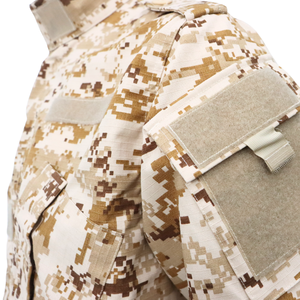
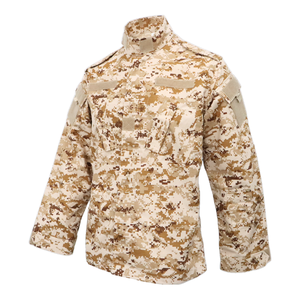
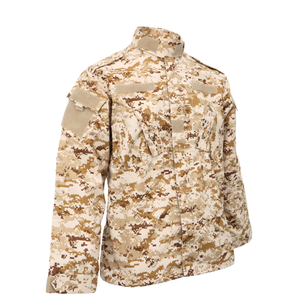
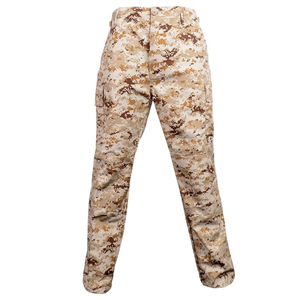

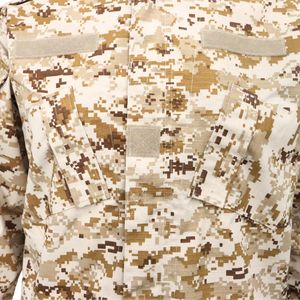


























WWII reproduction uniforms are outfits and accessories that replicate the garments worn by soldiers and service members during the Second World War, including military jackets, caps, pants, and boots, often specific to different countries and branches of the military. Here are some of their types:
US Army WWII Reproduction Uniforms
The US Army in World War II adopted a variety of uniforms for different theaters of war and jobs. For the European theater, the standard field uniform was the OD (Olive Drab) service uniform, consisting of a wool shirt, tie, and trousers with a herringbone pattern. For the Pacific theater, the US Army wore a khaki uniform consisting of a short-sleeved shirt, tie, and trousers.
Specialized uniforms were developed for the Air Force, Navy, Marines, and other services. The Marines wore the same general uniform as the Army, but they had different insignia and patches. The Navy wore a different uniform, consisting of a naval cap, a long-sleeved shirt, a tie, and bell-bottom trousers.
British WWII Reproduction Uniforms
British uniforms were different from American uniforms in the European theater. The British Army's general field uniform was the battledress, consisting of a wool shirt, tie, and trousers, and it was issued in a variety of colors for specific jobs and units. The British military had different uniforms for the Air Force, Navy, and specialized branches.
The Royal Navy also had a different uniform from the rest of the armed forces. Their uniform consisted of a naval cap, a long-sleeved shirt, a tie, and bell-bottom trousers.
German WWII Reproduction Uniforms
German uniforms were different for the different services. The Army used a different field uniform from the Navy and Air Force. The German Army's general field uniform was the gray-green wool tunic and trousers. The Luftwaffe and the Kriegsmarine had their own distinct uniforms as well.
Germany had various special uniforms for specific jobs. For example, police and paramilitary organizations had their own uniforms that were different from the military's.
Other Countries' WWII Reproduction Uniforms
Many other countries were involved in the war and had their own military uniforms. The uniform styles and designs varied drastically depending on the country and the branch of service. For example, Japan had a different military uniform from the Soviet Union, and their uniforms were also different from the American and British uniforms.
Reproducing designs of these uniforms requires attention to detail and historical accuracy. They are characterized by their specific historical context, functionality, and the materials that were available at the time. Here are some key design elements:
Fabrics and Materials
These uniforms are developed from a variety of materials that were in line with the historic ones. Material selection is key in reproducing the uniforms. It should consider functionality, comfort and aesthetic. For instance, cotton sateen is used in reproducing the WW2 army women's cotton sateen dress. Women's dresses are typically developed from materials such as lightweight cotton blends, silks or synthetics that are economically developed and easy to access. These materials are used to capture the vintage style and silhouette.
Color Schemes
The color schemes for these uniforms are selected based on historical accuracy. For instance, the U.S. Army Air Force wore a distinctive uniform that consisted of a dark blue coat. It had a light gray shirt and a tie. It also included a dark blue cap and trousers. In addition, the U.S. Navy and Merchant Marine WW2 uniforms consisted of a white shirt, dark blue trousers and a black tie.
When creating women's dresses, the color schemes normally vary. They are usually based on the season, occasion and personal style. For instance, a navy blue dress may be paired with bright colored accents such as red or yellow. This is in contrast with the more muted palette of the military uniforms. Color selection for this type of reproduction should consider historical accuracy and the materials' availability at the time.
Patterns and Textures
These uniforms are generally made from solid colored fabrics. These fabrics are sometimes enhanced with subtle textures such as twills or herringbone weaves. The focus is usually on functionality and practicality. For instance, the U.S. Army fatigues were made from cotton poplin or canvas. The U.S. Navy enlisted men's uniforms were made from wool or a wool blend. This was due to its durability and warmth. On the other hand, women's dresses were more diverse. They were developed from printed fabrics that included floral patterns, stripes and polka dots. These were usually made from cotton, rayon or silk blends.
Functional Details
Functional details in these uniforms include pockets, epaulets, and buttons. These details were strategically placed to enhance functionality and military rank identification. For instance, the U.S. Army Air Force uniform had insignia and medals on the breast pocket. The U.S. Navy uniforms had rank insignia on the sleeves. When developing women's dresses, functional details were more focused on enhancing the garment's usability and aesthetic. For instance, the WWII military women's dresses had functional details such as waistbands, buttons and pockets.
Accessories and Insignia
These uniforms were accessorized with insignia, belts and hats that represented military branches and ranks. For instance, WWII Navy uniforms were accessorized with a white hat and necktie. Women's dresses were accessorized with vintage style hats, gloves and footwear. For instance, women's military dresses were paired with low heeled shoes and simple jewelry.
Construction Techniques
Hand sewing techniques were used to construct these uniforms. Additionally, they also used industrial sewing machines. Details such as buttons, insignia and epaulets were hand sewn onto the uniforms. Normally, women's dresses employed industrial sewing machines that utilized serging and coverstitch machines. These machines provided efficiency and consistency in large scale production. Hand finishing techniques were also employed to enhance quality and attention to detail.
The uniforms of reproduction soldiers are matched with various items to achieve different appearances. To achieve an authentic World War II soldier look, the following elements are combined:
U.S. Army Soldier
The World War II U.S. Army soldier wore a khaki shirt and pants. A woolen olive drab sweater was also part of the uniform. The soldiers wore the M1 helmet. It was made of steel and had two parts. The jacket was called the M41 Field Jacket. It was made of cotton and had a loop for the belt. The boots were leather and were black. They were laced up and had a steel toe. The name tag was on the left side of the jacket. It had the soldier's last name. The Army logo was on the right side of the chest. Soldiers had patches on their sleeves. They showed their rank and unit. The WWII U.S. Army uniform was simple but very useful for the soldiers in the war.
Pair the WW2 U.S. Army uniform with a helmet for safety. Combine historical accuracy with modern style. Use a reproduction jacket or shirt and pants. Add a belt and boots for a complete look. Incorporate patches and insignia. Choose a steel M1 helmet. This gives a real-world appearance. Ensure fit for comfort and mobility. Select materials that match the period. Add a leather belt and suspenders. Choose authentic socks and shoes. Make the outfit functional and true to history. Add a name tag and army logo. Put rank and unit patches on the sleeves.
German Soldiers
The World War II German soldier wore a uniform that showed his rank. The color of the uniform changed with the rank. High-ranking men wore gray uniforms. They had light blue shirts. The pants were also light blue. A dark blue tie was part of the outfit. Low-ranking men wore a different color. Their shirts and pants were dark gray. They had a different tie color too.
The uniform had a coat with a collar. The collar had two points. One point was for the army. The other was for the unit. The coat had buttons in the middle. There were four buttons. Two were on each side. The trousers were straight and dark. They ended above the boots. The boots were black and tall. They reached the knees. Soldiers tucked their pants into the boots. This kept them warm and ready for action. The uniform was simple but very sharp. It helped soldiers focus on their tasks. They did not think about their clothes. They thought about their missions instead.
Japanese WWII Soldiers
During World War II, Japanese soldiers wore simple clothes. They had a cap with a round top. The shirt was plain and had buttons. It closed with a few buttons at the neck. The trousers were loose and dark. They ended above the ankles. Soldiers wore high socks and brown boots. The boots were laced up to the calves. Soldiers tied their trousers with a cloth. The cloth was at the waist and held the pants up. The tops of the pants were tucked into the boots. This helped them move well. The uniform was not fancy. It was made for work and action. Soldiers in the field did not care about style. They focused on their jobs instead.
Q1: What are the main components of WWII German uniforms?
A1: World War II German uniforms had several key components. They included field caps, tunics, trousers, and boots for soldiers and officers. They also wore specific insignia and accessories that denoted rank, branch of service, and unit affiliation. Material quality and color varied by the season and specific Wehrmacht branch.
Q2: How did WWII soldiers keep their uniforms clean and well-maintained?
A2: Soldiers during WWII had limited means to clean their uniforms. They used available water sources to wash their uniforms. They employed bar soap or whatever soap was on hand. They relied on dry cleaning services in occupied areas when possible. They received replacement uniforms from supply depots as needed.
Q3: What role did accessories play in identifying ranks and units in WWII?
A3: Accessories such as insignia, medals, and patches were crucial for identifying a soldier's rank, unit, and branch of service. Each Wehrmacht branch had specific symbols. Accessories were worn on the uniform in standardized locations. This allowed for quick identification of a soldier's identity and military history.
Q4: How did weather conditions affect the uniforms worn by soldiers during WWII?
A4: Weather conditions significantly influenced the uniforms WWII soldiers wore. In cold weather, they layered additional garments. These included greatcoats, scarves, gloves, and winter boots. In hot weather, they wore lighter fabrics and fewer layers. Rainy conditions often necessitated the use of waterproof gear.
Q5: What was the significance of the greatcoat in WWII military attire?
A5: The greatcoat was an important part of WWII military attire. It provided warmth and protection. Its design included a high collar and double-breasted front. This offered additional insulation against cold weather. The greatcoat's length and structure helped shield soldiers from adverse weather conditions. It became a symbol of military presence and preparedness on the battlefield.